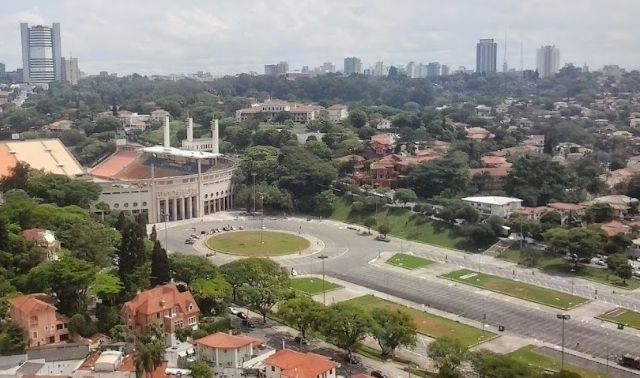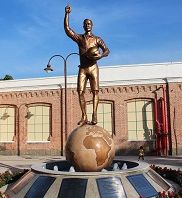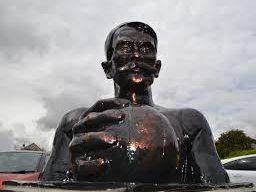The John Harley Bust
(Versión Español)

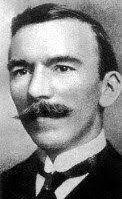
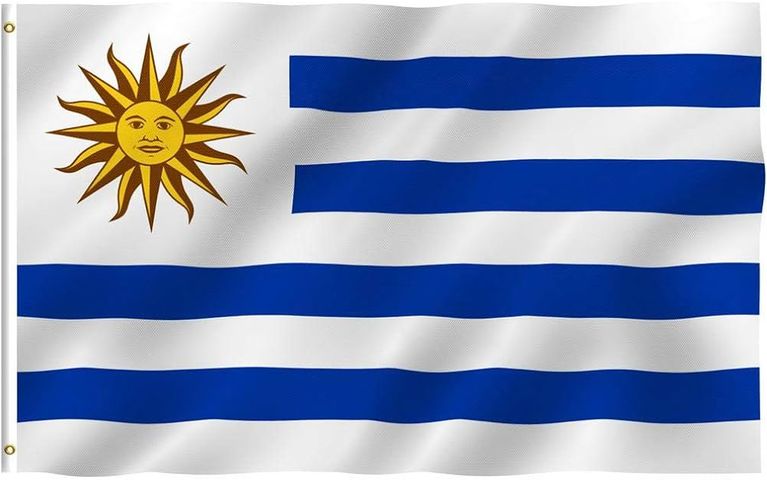
As of April 2024 we at the Scots Football Historians Group in Scotland, our colleagues and friends in Uruguay, Scotland and elsewhere and Club Atletico Penarol, with the enthusiastic endorsement and help from Montevideo of the Harley family and, we hope, that of Penarol and Uruguayan football fans worldwide launch our global appeal for the funding of a bust of John Harley or similar to be located in Glasgow's Cathcart. And here is the story, the why .....
"There is a small part of Scotland that is forever Uruguay. It is in Cathcart, now a part of South Glasgow in Scotland a few stones throws from our Scottish international football stadium, Hampden Park. To go there in person or on Google Maps find or enter "Cathcart Snuff Mill Bridge". It is close to the old village-centre. Then cross the bridge from north to south and follow the road up and round to the right and then left to the next cross-roads, stop, lean back on the wrought-iron gates to the left, almost the same gates that were there one hundred and forty years ago, look further left and up and it is there. Whether in reality or virtually you are in Braehead, and looking at the birthplace of John Harley.
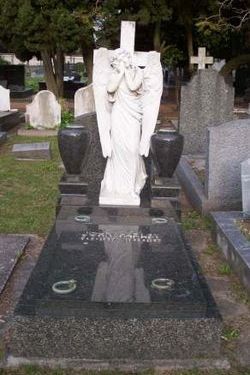
John Harley Grave, British Cemetery, Montevideo
But let us cross for to almost the other side of the World, to Montevideo. In its Cemiterio Britanico, its British Cemetery, is a beautiful grave that is kept pristine, almost a shrine, although the passing of its occupant was more than half a century ago.
It is the last resting-place, as he was and still is known in Uruguay, of El Yoni, Johnny, the man, the Scotsman, who did not take football to the country but gave it a distinct style; one that would win two Olympic Gold Medals and two World Cups, both in two attempts, in 1924, 1928, 1930 and in 1950 in Rio de Janeiro; this last in defeating the home country in what Brazilians still call the Maracanaco,, the Debacle, the "Massacre" of the Maracana.
And it is Brazil that can be best used to take this story further. in the hundred years or so from 1820 a surprisingly large number of Scots went to South America for relief from actual and potential poverty at home. They went as farmers, railway-men, technicians, merchants. Many never came back. And with them they took a love, a passion for the Scottish national game, football. In that John Harley paralleled them exactly.
In Brazil at more or less the same time football arrived in Sao Paulo at the feet of Charles Miller, the half-Scot, half-Brazilian son of Scottish merchant. In Sao Paulo state it was with Tom Scott, a Scottish railwayman and in Rio de Janeiro with the arrival of the Scots-Irish, textile technician, Tommy Donohoe. Charles Miller is honoured in his home-town with the naming for him of square in front of Sao Paulo's Pacaembu Stadium. Tom Scott is ignored. He is buried in Campinas in a grave that is unremarkable except that it is the only one in the Cemetery in English. On the other hand Tommy Donohoe has a golden statue thirty feet high in the Rio suburb of Bangu, where he lived, worked and died. In fact the statue stands in pride of place front of the former factory he helped to create, now a shopping-centre. Additionally more recently a bust of him was placed in Busby in Scotland, where he was born and grew up. And Busby is also in South Glasgow, just three miles from Cathcart.
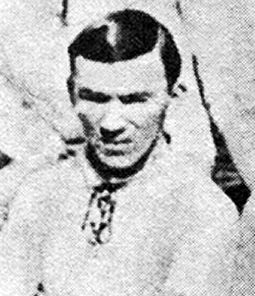
John Harley - Player
But Uruguay is at the other extreme to Brazil, 2% of its area, 1.6% of its population and of that 3.5 million, two thirds that of Scotland, 40% is in Montevideo itself. So with regard to football at least there was no room for more than one source, and whilst the basic game was taken to the country by the half-Scottish William Leslie Poole, in truth John Harley was it.
Although there is so far no formal record of him in football at home he had clearly learned the game in Glasgow, no doubt to start with in Cathcart itself and then probably in Springburn, the city's most important railway-yard, as he became a railway-engineer to trade. And it was that which took him on his first essay abroad. In 1906 he travelled to Argentina, to Bahia Blanca, there employed for a year or so by the Bahia Blanca Great Southern Railway, Ferrocarril del Sud, and after a brief return home in 1907 he was back again, this time to Buenos Aires eventually to work the Western Railway, Ferrocarril Oeste.
John Harley was not a big man, which perhaps had held him back in Glasgow but in the Argentine capital he was in his element quickly becoming an integral part of Ferrocarril Oeste's company team in the position of Scottish, attacking centre-half. And it was there that he was spotted by CURCC, the Central Uruguayan Railway Company team. It was in the process of re-building, Johnny was persuaded to join by the offer of a job at its Penarol company headquarters and railway-yard just outside Montevideo and he made, as it transpired, the permanent move to a new home across the River Plate, where he would also marry and raise a Uruguayan-Scots family that continues to this day.
At CURCC, or the major Uruguayan club, Penarol, as it would later become and still is today, John Harley became the fulcrum of a team that had already been heavily influenced by Scots but now adopted the Scottish game as its own. But Harley's genius was not only coaching in it the increasing numbers of native, Uruguayan players in the club but also to adapt that same style to local conditions. And the success that his Uruguayan version of the passing-game, played on the floor, led first to him being selected for the Uruguay national team, for his style of play to become increasingly that of Uruguayan club football in general and finally that of the national team itself. John Harley ceased to play for Uruguay in 1916 but he did not fully step down from the club game until 1920, aged thirty-four. He captained CURCC/Penarol for ten seasons, in that time bringing through many and influencing all of the players that made up the Olympic squads in 1924 and beyond. He shaped Uruguayan and therefore a pivotal part World football into the modern era, a fact recognised and lauded in the country he adopted and which adopted him but largely ignored in the country of his birth; at least so far.
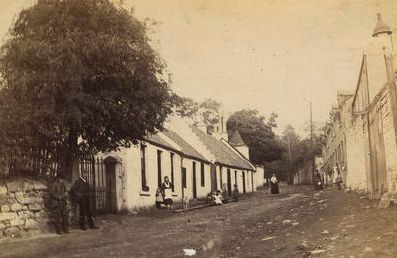
Braehead, Cathcart circa 1886
So what can be done about it? The Donohoe bust is both fitting and appropriate for a footballing pioneer. It marks his birth, his origins. We know John Harley's too. A contemporary photograph shows it as it was then, a picture of that poverty, which drove so many Scots to a better life elsewhere. A modern photograph shows it as it is now, quiet corner in an bustling city. The wall and the iron-gates are still there and although the houses might have changed the left, corner, bottom has not. Moreover, there is place for at the very least a plaque and, whilst perhaps not a Bangu-style golden statue, then a Busby-like bust for a man, who was not just like Donohoe, a local footballing pioneer, but more still, a footballing innovator on a World scale."
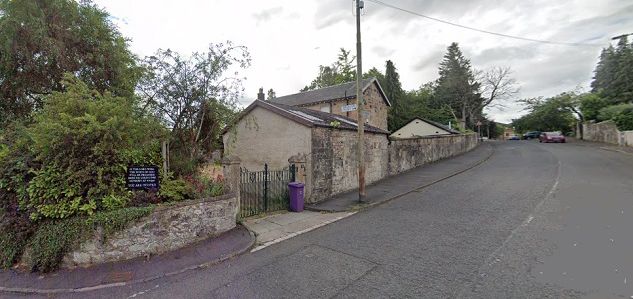
Braehead today
Please donate what you can in no matter what currency by clicking securely here on the JUST GIVING link.
Many thanks.
Back to the SFHG Home page
